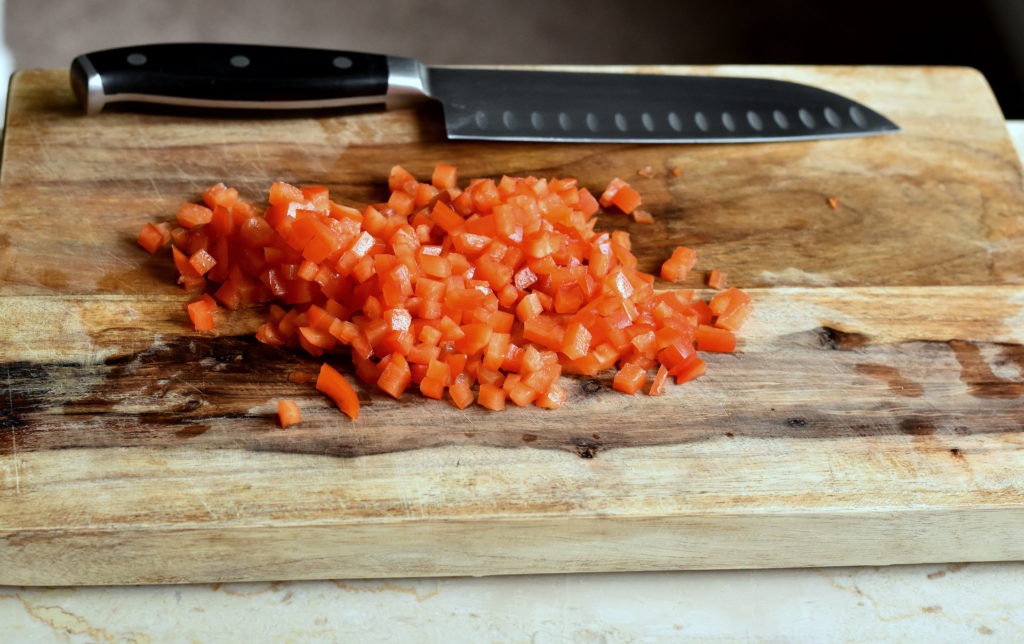
Here’s a question that came into my instagram Dm and I wanted to answer it here.
Q: “What kind of cutting board is better? Wood or plastic? In terms of hygiene. And how to clean a cutting board properly?
A: Wood and plastic are not the only ones available, but no matter which you choose, you should keep in mind cross contamination. That is, when bacteria is transferred unintentionally from one object to another.
If you keep one cutting board reserved for raw meat, poultry and seafood and separate one for uncooked foods – you’re preventing this along with washing your hands in between, or using gloves properly.
Here are some of my faves on my Amazon Affiliate Shop
The links provided are affiliate links, which means I earn a small commission from purchases made through these links at no extra cost to you.
Wood
Pros: beautiful, easy on knives, can be “self healing” meaning the grain and fibers close up. Less scratches and markings.
Cons: can be expensive, heavy, can warp if handled incorrectly, can require a food grade mineral oil when it dries out over time.
Plastic
Pros: lightweight, inexpensive, dishwasher safe
Cons: harder on your knives and the very gouging that occurs is a breeding ground for bacteria.
Bamboo
Pros: less porous, resistant to scratches and bacteria, renewable source
Cons: some may be processed with formeldahyde and glues that can leech into food.
Rubber
Pros: easy on your knives, lightweight, similarly healing like wood, dishwasher safe
Cons: can melt, expensive
Glass, marble or any stone:
Not recommended. They are very harsh on your knives, and dangerous since they are very slippery. They would be nice to use for displaying boards such as cheese, fruit, charcuterie, etc.
Cleaning your cutting board:
Mild soap and hot water for cleaning. Use vinegar, and hydrogen peroxide (don’t mix together, spray separately) for a non-toxic way to sanitize and disinfect. Use lemon juice and kosher salt to deodorize.
Dry properly with a kitchen towel and allow for the cutting board to receive enough airflow.
Replace
When the cutting board is warped, has large gouges, deep scratches, and has a strong odor even after deodorizing several times.
Questions to ask yourself before purchasing a cutting board
– When I stand at the counter, will it be too high and awkward for me to chop comfortably?
– Is it wide enough to chop everything I need, for the amount I cook?
-Will it fit in my dishwasher? will it fit in my sink?
-Is it too heavy for me to handle?
Bottom line, it’s great to have a few different kinds if you can manage it.
Interesting. I have a bamboo cutting board but I tend to use only one board for all my cutting (it’s just easier/more convenient than switching back and forth—-and less to clean). I put a small rubber mat under the board to keep it from moving.
Nice job putting the mat underneath! I recommend having one separate board for raw meat/seafood/poultry if you can.
You mentioned fitting in the dishwasher – but wood should be washed by hand, yes? So that applies to which, rubber?
I haven’t heard of rubber boards before, but I’m intrigued. Do you have a recommendation?
Thanks!
Hi Liz, yes wood should definitely be washed by hand, that’s why it is one of the questions you should ask yourself. Some people don’t want to bother washing by hand, so a wood board would not be suitable for them. You can put plastic and composite in the dishwasher!